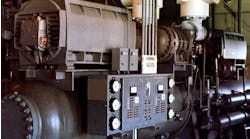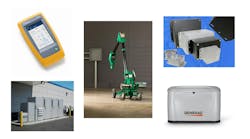Art. 430, Part VII provides the requirements for motor controllers. The requirements for motor control circuits are in Part VI. What’s the difference? Part VI is about the supply power to motor controllers. The intention of Part VII is to require suitable controllers for all motors [430.81].
Controllers for smaller motors have special requirements:
- Stationary motor of 1/8 horsepower or less. These are things such as clock motors. The branch circuit disconnecting means can serve as the controller [430.81(A)].
- Portable motor of 1/3 horsepower or less. The controller can be a cord connector or an attachment plug and receptacle [430.81(B)].
A controller must be capable of:
- Starting the motor;
- Stopping the motor; and
- Interrupting the locked-rotor current of the motor [430.82(A)].
Additional requirements apply to autotransformers [430.82(B)] and rheostats [430.82(C)]. A controller doesn’t need to open all conductors to a motor [430.84] unless it also serves as a disconnecting means [Exception].
The requirements for controller ratings are a bit confusing. Begin with the general rule: The horsepower rating of the controller can’t be lower than the horsepower rating of the motor [430.83(A)(1)]. Then look through the special cases to see if you are working with one of those:
- Branch-circuit inverse time breaker rated in amperes. If it’s also used for overload protection, it must conform to the Art. 430 provisions governing overload protection.
- Molded case switch rated in amperes. You can use it as a controller, even though it’s not rated in horsepower and can’t conform to the general rule.
- The smaller motors covered above (e.g., clock motors).
- Torque motors. The controller must have a continuous-duty, full-load current rating not less than the nameplate current rating of the motor [430.83(D)].
- Controller with a voltage rating. It must match the nominal voltage between any two conductors if a straight rating. If it has a slash rating, the nominal voltage to ground from any conductor cannot exceed the lower of the two ratings [430.83(E)].
Each motor must be provided with its own controller [430.87], but there are four exceptions.
Adjustable speed motors can’t be started under a weakened field unless the motor in question is designed for such starting [430.88]. Speed limiting is required for three types of motors or machines, for example series motors, and there are two exceptions [430.89].
If you use a combination fuseholder and switch as a controller, the fuseholder must accommodate the size of fuse specified in Art. 430, Part III for motor overload protection.




